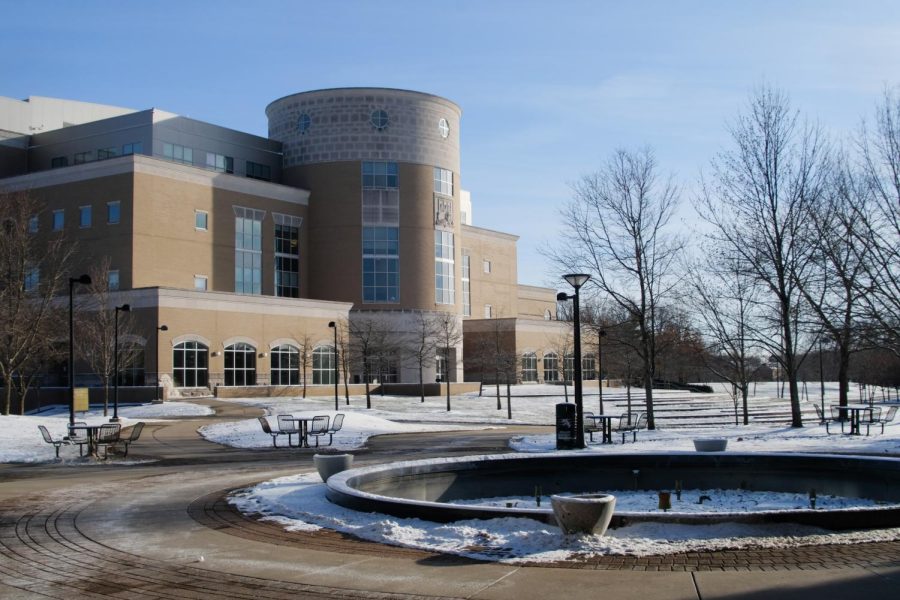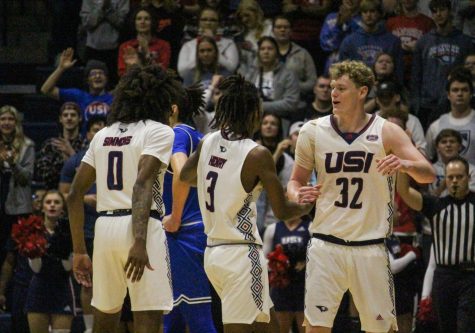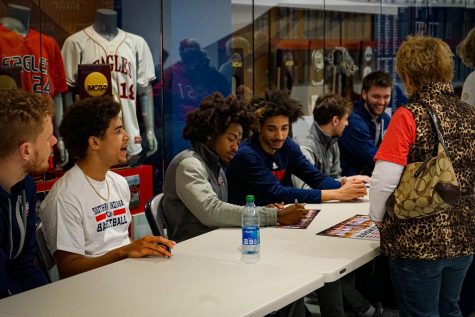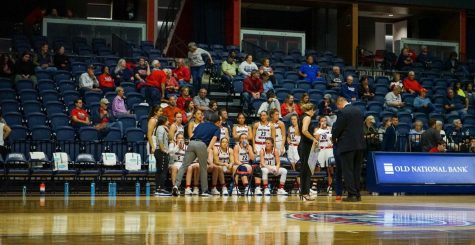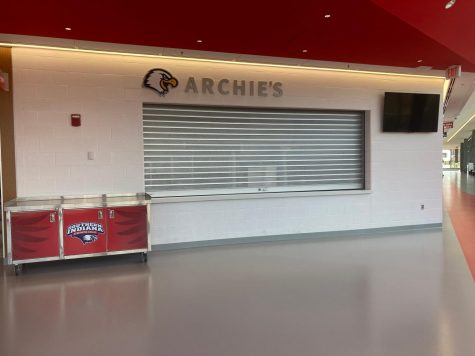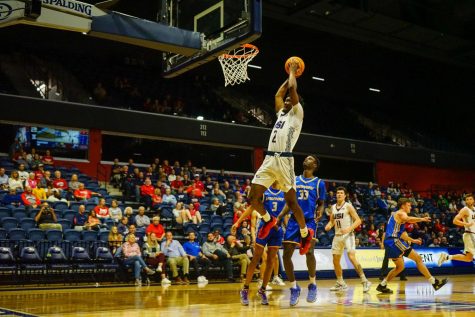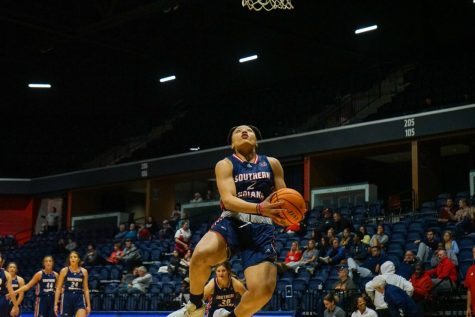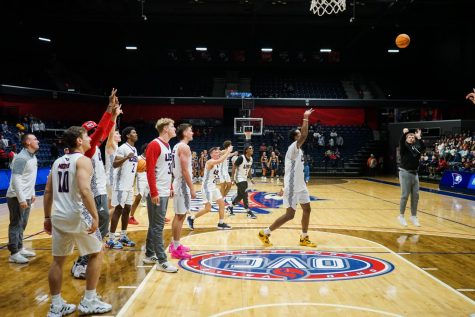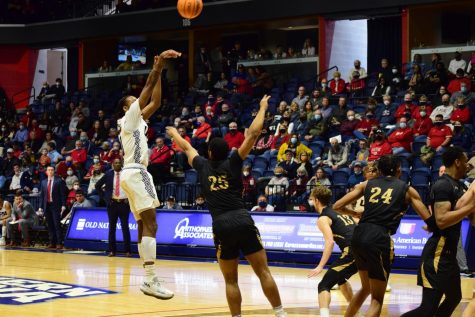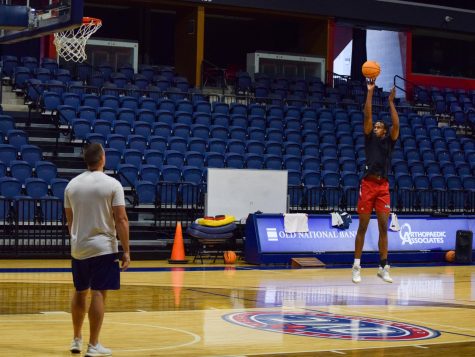Opinion: The problem is not DI – it’s communication
Shelby Clark, Editor-in-Chief, gives her opinion about the possible transition to Division I.
February 3, 2022
The majority of problems students and faculty have with the potential transition to Division I is not the Division I distinction itself. Students and faculty feel administration is not listening to them and addressing their needs.
They want vending machines in the Art Center. They want more counselors in Counseling and Psychological Services. They want to graduate with the social media minor they were promised.
They want more colleagues to help teach more classes. They want the chance to talk to administration in a conversational format. They want help dealing with burnout.
They are not against Division I itself.
Some of the arguments presented against DI propose using the funds that would be spent on DI to address other needs on campus. The funds that will be used to pay for DI are not available yet.
These funds will not exist without Division I. According to the Division I Exploratory Committee, the $5.4 million cost of DI will be financed by future donations and student fees, not by taking funds from other programs or increasing tuition.
Those who oppose the student fees acknowledge the extra cost for students that could affect future enrollment. According to the proposed student fee plan provided by the Division I Exploratory Committee, the student fee would be increased slowly over four years ending with an annual fee of $475.
$475 is real money students will have to pay; however, a $475 student fee is not a deal-breaker for most potential students when choosing a college education. It is probably something that only has attention drawn to it now because of the DI study. In a few years, I feel the fee will be forgotten.
This fee is so small compared to student fees at other universities I don’t think future students will even notice or care. It is especially small when compared to the costs of attending the flagship Division I schools in the state: Indiana University and Purdue University.
At an affordable cost, future USI students would be able to attend a university with some of the best programs and faculty in the state that is athletically Division I.
One of the only arguments against DI that directly relates to Division I as an athletic distinction is the question of whether USI athletics are ready to compete at the DI level.
There is a distinction between Division II and Division I athletes and supportive staff. I have great respect and appreciation for the student athletes at this institution. Not only are they strong academically, but they have consistently competed strongly at the DII level and in the Great Lakes Valley Conference.
The athletic ability of USI DII athletes are the reason why the community has been asking for years when USI will go DI. It is one of the reasons why DI conferences have approached the university now. They are the reason the university is having a Division I conversation.
University athletics would have to bring in DI athletes and build a support staff large enough to support DI athletics. I feel they are fully aware of this.
The other thing I think is important to remember is that the university is not looking to join DI conferences like the Big Ten or the Atlantic Coast Conference. The DI Exploratory Committee released attendance comparison data on three conferences that “may be considered in the transition:” Horizon League Conference, Ohio Valley Conference and Atlantic Sun Conference.
From USI’s founding in 1965 as Indiana State University Evansville to independence in 1985 to possibly transitioning to DI in 2022, the focus of this institution has always been the community and the people at USI.
One of the largest concerns from inside the university community about DI is the university losing its sense of community and culture. There is an understandable fear that what has made USI so special for all these years will be lost to Division I.
That’s a lot of pressure to place on athletics. While strong athletics has been a part of the university’s history, athletics is not what has built the current culture of USI – the people have.
As long as USI remembers its roots while it moves into the future, people will remain the driving force of USI culture. Relationships between faculty and students, colleagues who become like family and administration who cares about individual students at a personal level don’t have to go away because the athletics at the university improve.
Students, faculty and staff across campus often say “Screagles fly together.” This sentiment has been shared by the campus community as we have mourned several of our own in 2021.
“Screagles fly together” means more than mourning together. It means growing together. When one of us reaches new heights, so do the others. University athletics improving does not mean that other departments on campus will be harmed, and it does not mean that other departments can’t grow.
Work together as Screagles to see the improvement you want to see on campus. You are the USI you want to see.
Culture starts with you.
As the Editor-in-Chief of the university’s 53-year-old student publication, I have heard the conversations on campus about Division I.
I have been at the Faculty Senate meetings and talked with groups of students. I have heard student and faculty pleas potentially more than any other student on campus. I have read all the studies and surveys and listened to presentations by the DI Exploratory Committee. I even had The Shield conduct a student survey.
I have researched this topic and engaged in critical thinking and communication. I have studied the history of this institution and its athletics as told by the voice of former students in The Shield archive.
It has been my job to hear your voice and tell your story. It has been my job to ensure The Shield is your voice. Protecting the voice of the students, faculty and staff is what I do.
My advice for the campus community with regards to Division I is to be objective. There is a quiet “yes” on campus with regards to DI. Find out why.
The conversation about Division I is two-sided. Don’t rob yourself of the conversation by only listening to the loudest voices. Listen to the quiet voices too.
The truth is USI doesn’t have a DI problem. We have a communication problem.
Instead of using Division I as a platform to address all campus issues, address the issues in the areas where there are solutions. Talk to the department that can bring you the change you are seeking. The majority of problems people have with Division I can not be fixed with the athletic department because they are not athletic problems.
We all love USI, so let’s use our love to reach new heights and fly together, no matter the ending decision on Division I.
To the Board of Trustees, I respect your decision on Division I either way. To the DI Exploratory Committee and President Ronald Rochon, I have great respect for the work you have done with regards to DI.

